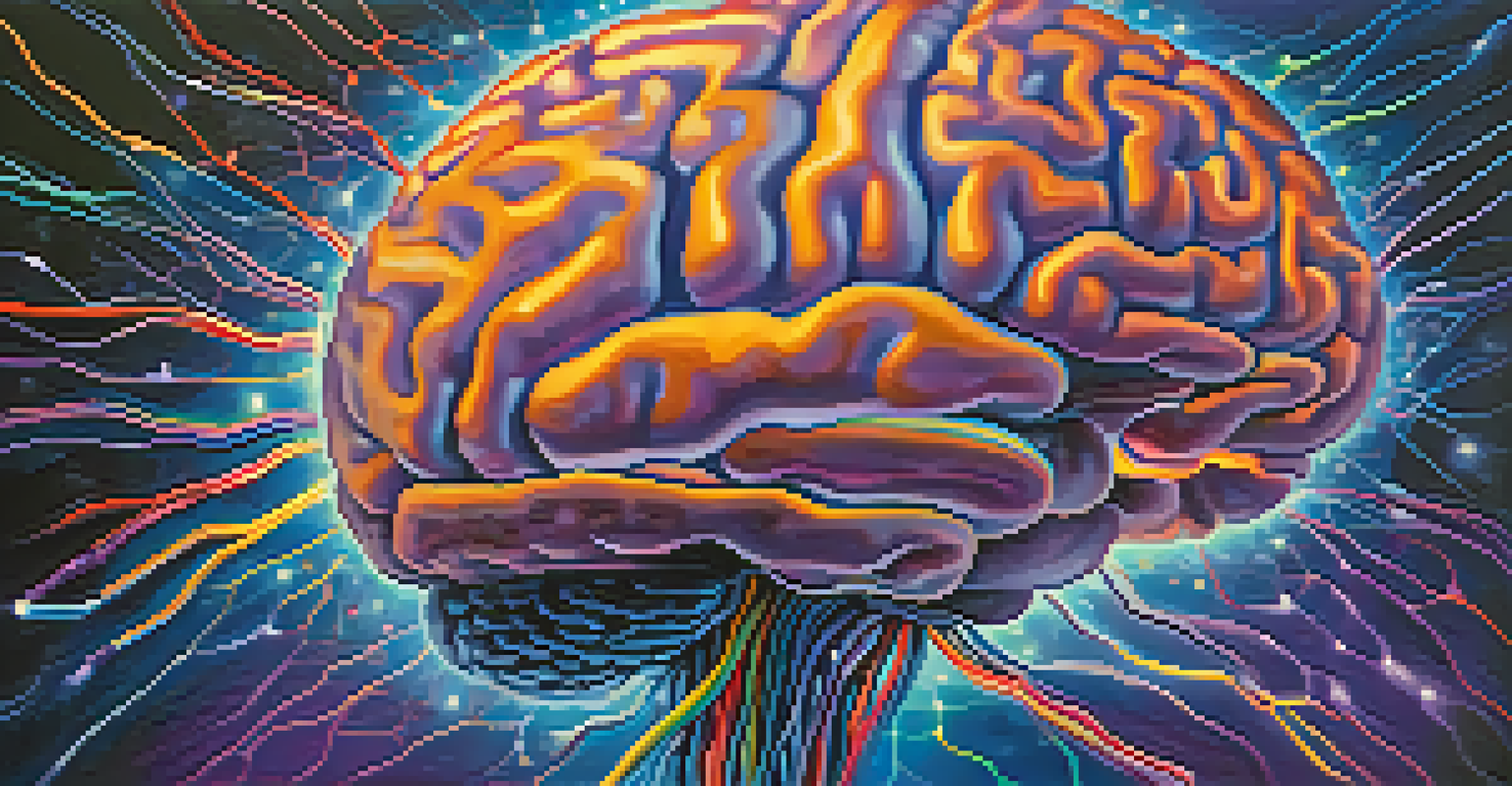Entheogens: A Tool for Healing and Relationship Growth

Understanding Entheogens and Their History
Entheogens are substances that people have used for centuries in spiritual and healing practices. Derived from the Greek words 'entheos' meaning 'God within' and 'genes' meaning 'to generate,' these compounds often alter consciousness and promote introspection. Cultures around the world, from indigenous tribes to modern spiritual seekers, have utilized entheogens to connect deeper with themselves and the universe.
The mind is everything. What you think you become.
Historically, entheogens like peyote, psilocybin mushrooms, and ayahuasca have played significant roles in rituals and healing practices. These substances are often consumed in guided settings to facilitate profound personal insights and emotional release. As societies evolve, the interest in these natural compounds has surged, leading to a renaissance in their usage for therapy and personal growth.
Recent research has begun to unveil the therapeutic potential of entheogens, especially in treating mental health issues like PTSD, anxiety, and depression. By understanding their history and cultural significance, we can appreciate their role in modern healing practices and relationship dynamics.
The Science Behind Entheogens and Healing
Entheogens work primarily by interacting with the brain's serotonin receptors, particularly the 5-HT2A receptor. This interaction can lead to altered states of consciousness, where individuals often report heightened emotional sensitivity and cognitive flexibility. Scientific studies suggest that these experiences can lead to lasting changes in mood and perception, fostering healing from trauma and emotional distress.

One notable study found that psilocybin, a compound found in magic mushrooms, significantly reduced symptoms of depression in participants, even months after treatment. The profound experiences often encourage participants to confront difficult emotions and unresolved issues. This process can lead to a cathartic release, helping individuals gain clarity and perspective on their lives.
Entheogens Enhance Healing Processes
Entheogens have shown potential in treating mental health issues by promoting emotional release and fostering personal insights.
While the science is still emerging, preliminary findings indicate that entheogens can also enhance neuroplasticity, the brain's ability to reorganize itself. This means that people can potentially rewire negative thought patterns and cultivate healthier emotional responses, paving the way for deeper healing and personal growth.
Entheogens and Relationship Growth
Using entheogens in a safe and supportive environment can significantly enhance interpersonal relationships. The shared experience of altered consciousness often fosters empathy and understanding, breaking down barriers that might otherwise hinder communication. Participants frequently report feeling more connected to their partners or friends, leading to deeper emotional bonds.
The greatest discovery of my generation is that a human being can alter his life by altering his attitudes.
In therapeutic settings, couples often use entheogens to explore their relationship dynamics and resolve longstanding conflicts. By seeing issues from a new perspective, individuals can gain insights into their behaviors and reactions. This heightened awareness can spark crucial conversations, allowing for honest discussions about feelings and expectations.
Moreover, the vulnerability experienced during entheogenic sessions can encourage openness and intimacy. When people feel safe to express their emotions, it creates a nurturing space for growth. This process ultimately leads to stronger relationships, built on trust, love, and mutual understanding.
Navigating the Risks of Entheogen Use
While entheogens can offer powerful benefits, it's crucial to approach their use with caution. Not everyone is suited for these experiences, especially those with a history of severe mental health issues. Potential risks include exacerbating anxiety or triggering psychotic episodes, making it essential to consult with professionals and conduct thorough self-reflection before embarking on such a journey.
Setting and mindset play a significant role in the safety and effectiveness of entheogenic experiences. A supportive environment, often facilitated by trained guides or therapists, can help individuals navigate challenging emotions that may arise. Preparing mentally and emotionally beforehand can also lead to more positive outcomes and reduce the likelihood of adverse reactions.
Strengthening Relationships
Using entheogens in a supportive environment can deepen emotional bonds and facilitate open communication between individuals.
Ultimately, informed decision-making is key when considering entheogen use for healing or relationship growth. Balancing the desire for exploration with an understanding of potential risks can help ensure a safe and transformative experience.
Setting Intentions for Entheogenic Experiences
Setting clear intentions before using entheogens can significantly enhance the experience and outcomes. Intentions act like a guiding compass, helping individuals focus their thoughts and emotions during the journey. By reflecting on personal goals, such as healing from past trauma or improving a relationship, individuals can create a meaningful framework for their experience.
In group settings, sharing intentions can foster a sense of community and support among participants. This openness can create a safe space that encourages vulnerability and connection. When everyone in the group is aligned in their intentions, it can amplify the collective energy and deepen the overall experience.
Moreover, maintaining a journal before and after the experience can help clarify intentions and track progress. Writing about hopes and fears can serve as a valuable tool for reflection, allowing individuals to revisit their thoughts and feelings as they integrate their experiences into everyday life.
Integration: Making Sense of the Experience
Integration is a crucial aspect of using entheogens for healing and growth. After experiencing an altered state of consciousness, individuals often face the challenge of making sense of their insights and emotions. This process involves reflecting on the experience, understanding its implications, and applying the lessons learned to daily life.
Working with a therapist or joining integration circles can provide essential support during this phase. These spaces encourage sharing experiences with others who understand the journey, facilitating deeper reflection and meaning-making. The insights gained can lead to actionable steps for personal growth and improved relationships.
Importance of Safe Use
Approaching entheogen use with caution and informed decision-making is crucial to ensure safety and beneficial outcomes.
Ultimately, effective integration can transform a fleeting experience into lasting change. By actively engaging with the lessons learned, individuals can foster healing and cultivate healthier connections with themselves and others.
The Future of Entheogens in Healing and Relationships
As societal perceptions of entheogens continue to evolve, their potential in healing and relationship growth is becoming more recognized. Research is expanding, with more studies investigating the therapeutic benefits of these substances. With ongoing clinical trials, we may soon see entheogens integrated into mainstream mental health treatments, offering new hope for those struggling with emotional challenges.
Additionally, as more people share their positive experiences, the stigma surrounding entheogen use may diminish. This shift could lead to more open conversations about mental health, healing, and the role of altered states in personal development. Building awareness about responsible use and integration practices is essential to ensure safe and beneficial outcomes.

In the end, the future of entheogens in healing and relationships is filled with promise. As we continue to learn and grow, these powerful substances may play a vital role in fostering deeper connections and emotional well-being for individuals and communities alike.